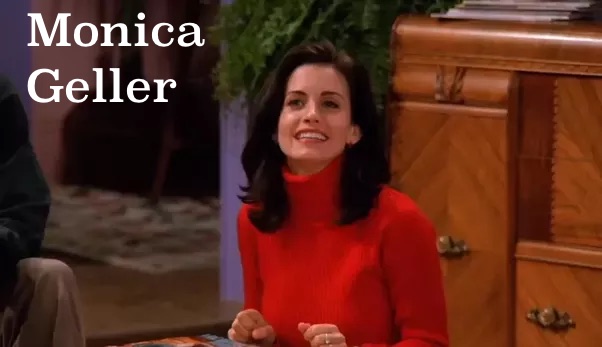Monica Geller aka The One With the Bent Spoon
/Spoon bending isn't something I've ever done with much regularity. I have a friend who used to perform spoon bending rather frequently. Unfortunately, I corrupted his mind with some of the philosophy I've espoused here and he transitioned to a different style of performing that spoon bending didn't really fit into. It's very hard to fit spoon bending into the type of magic I write about on this site. What I mean by that is, while it usually gets a strong reaction, it's also the epitome of a useless, show-off-y skill. It's hard to make it about much else beyond the awesome power of your mind, which is a presentation that works okay on strangers, but not so much with your friends and family who know how dull your mind actually is.
The presentation that follows makes use of the idea of using exposure as presentation, meta-routining, Peek Backstage style, and confusing the nature of magic methods.
Monica Geller
At the start you mention that you're working on "that old fake psychic trick" of spoon bending. You ask if they'd mind helping you by giving you an outside perspective and you casually mention you'll teach them the basics of how to do it, if they're interested.
In your lap is a significantly bent spoon (your spectator doesn't know about this) and a normal spoon is on the table. Have your friend examine the spoon then take it back from him with your right hand. Draw attention to your left hand for some reason and extend it out to your friend. (Maybe say something about building up a callus on your hand when you first started to learn spoon bending by doing it from brute force.) As you lean in and show your hand, your right hand pulls back and off the table edge and switches its spoon for the bent one in your lap. (It's unlikely you'll get caught doing this because it shouldn't really feel like you've started yet. But it doesn't matter if you do get caught. This is all just part of the set-up. For now, let's assume you don't get caught.)
Hold the bent spoon (that the spectator thinks is still straight) in your right hand so the bend is hidden. Take the spoon between both hands, wait a moment and concentrate, and then show the spoon is bent.
"It's an old Uri Geller trick," you say. Pull out the normal spoon from your lap. "It's a switch. When you're looking at my left hand, I switch the spoon for one I bent at home with some pliers earlier. It requires strong misdirection or it's easy to get caught." (If you actually did get caught doing the switch, then you would just jump to this point in the presentation.) "That's just version 1 of the switch. The other versions are much harder, but also more deceptive. I'll show you. Here's version 4."
You put the bent spoon back in your lap, but as you do, you secretly unbend it.
Now you take the normal spoon from the table and do any standard spoon bending sequence with it where it bends visibly.
Then you pull the straight spoon from your lap and set it on the table.
"And that would be the fourth version of the switch," you say.
Is this clear what we're going for here?
Step One: You show them a trick and then explain it for real. In so doing, you lead them to believe that spoon bending is done by switching a normal spoon for a bent spoon using misdirection.
Step Two: Now you show them a more "advanced version." Their mind is looking for a switch, but then you perform something that seemingly is not explained by such a switch. You're now fooling them on multiple levels.
Step Three: So now they're thinking you did something completely different. They assume maybe they misunderstood, and maybe "version 4" is some other method altogether. And while they're coming to that conclusion, you're going to jerk their mind back the other way. They believe it wasn't a switch, but now you casually provide evidence that it was, by removing the now straight spoon from your lap.
This is going to bring up some questions. How you handle those questions is up to you. Here is how I would deal with them.
Them: Wait... what? You didn't switch it.
Me: Sure I did. Remember, this spoon was straight?
Them: Yeah, I know. I mean, I saw it bend.
Me: I don't understand. You saw it transition from the straight spoon to the bent spoon, right?
Them: Yes. That's what I mean. When did you switch it?
Me: Between when it was straight and when it bent.
Them: I didn't see the switch.
Me: Oh, well it's not like version 1, where you switch out the whole spoon on a macro level. It's... well, it's hard to explain. But it's a different sort of thing.
Them: Show me.
Me: Well... I just did. You can't really slow it down. It doesn't work like that. If you want to learn it, I'll send you a book that explains the basics and once you've read that I'll help you learn it.
Then I'd send them a book on quantum physics.





